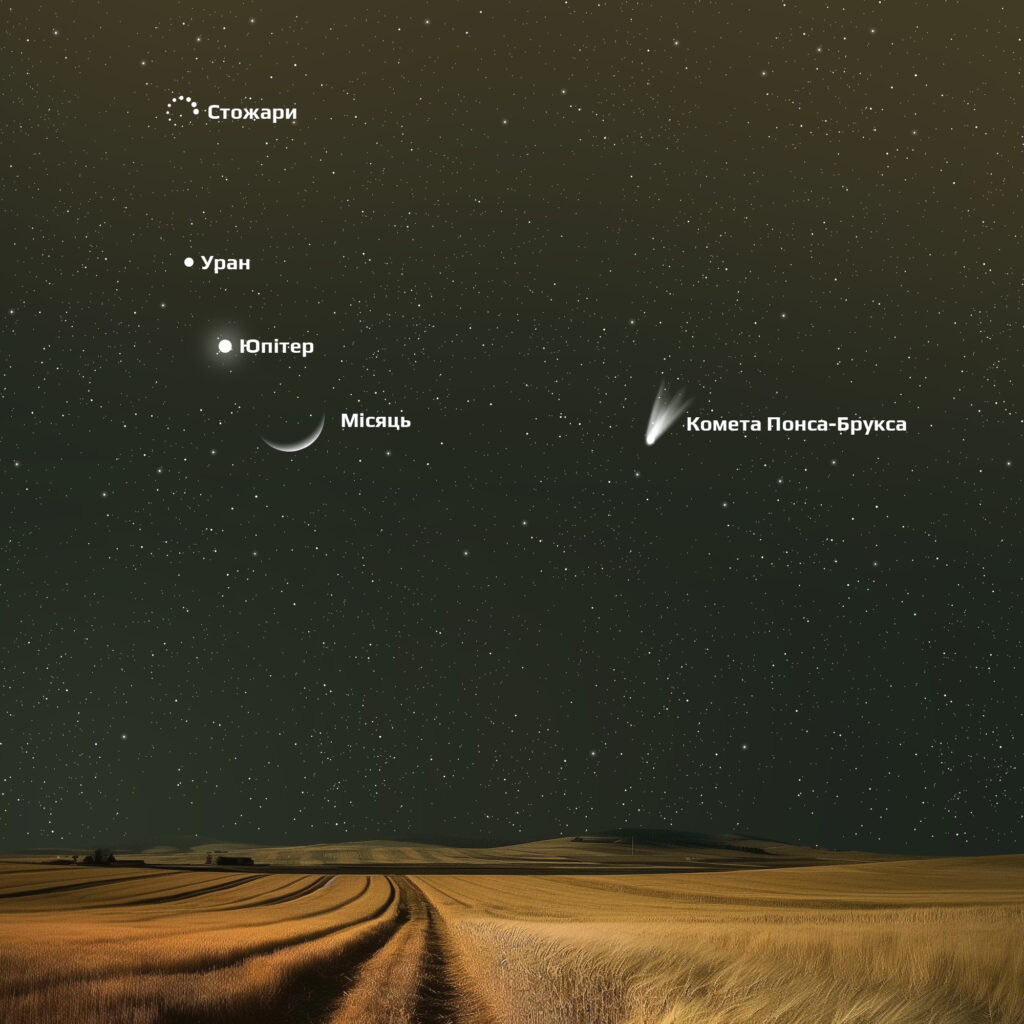Uranus is the only body in the Solar System for which it is known exactly which scientist was the first to realise that he was dealing with a new planet. It was the famous English astronomer William Herschel. He first saw the new celestial body on 13 March 1781, looking through his 16-centimetre reflector at the faint stars of the Gemini constellation. Unlike the next Neptune, Uranus was discovered by chance, without any preliminary calculations. Right now it is clearly visible in the evening sky. In the coming days, Jupiter and the Moon will help to find the seventh planet.
It is believed that the farthest planet in the Solar System that can be seen with the naked eye is Saturn, whose average distance from the Sun is 9.58 AU (1.433 billion km). Uranus is located twice as far away – the major axis of its orbit is 19.23 AU, at perihelion it approaches our luminary by 18.376 AU, at aphelion it moves away from it by 20.083 AU. In addition, it is more than twice as small as the “Lord of the Rings” (remember that Uranus also has a ring system, but it is a much dimmer one). But still, in a very dark sky, with a transparent atmosphere and no moon or artificial light, people with good eyesight can see the seventh planet without the help of astronomical instruments. The best place to do this is near its opposition. Last year, it was on 13 November, and this year it is expected to be on 17 November.

Uranus is now approaching its conjunction with the Sun, which means that its distance to Earth is also greater than average. However, in general, the distance to it from the point of view of ground-based observers does not change very significantly – from 17.38 AU to 21.08 AU, i.e. by 1.2 times (for Saturn, this figure is 1.38). Consequently, the planet’s apparent luminosity fluctuates slightly: from 5.3 to 5.9 magnitudes. This makes it easy to find in any configuration, if not with the naked eye, then with small binoculars. It is the latter that should be used to observe Uranus in the coming days. The search for the seventh planet will be greatly facilitated by the fifth: 6° west in the sky is bright Jupiter. In our latitudes, it will be visible to the right and below in the evenings. On 13 and 14 March, the crescent of the new Moon will pass near both planets. Another remarkable object that will greatly help in the search is the bright Stozhara (Ukrainian for Pleiades) star cluster. It will be 11° above Uranus and will look like a faint greenish star. To see the Uranian disc, telescopes with a lens diameter of at least 6 cm and a magnification of more than 80 times are needed.
On March evenings, Jupiter appears about 40° above the western horizon shortly after sunset, while Uranus should be sought about an hour later, at the end of the evening navigational twilight. From the point of view of ground-based observers, the planets are gradually moving closer together and will be about half a degree apart on 20 April, although in reality they will be separated by 14.6 AU (2 billion 184 million km).
Simultaneously with these planets, the periodic comet Pons-Brooks will appear in the evening sky — it will be visible to the naked eye in late March.

